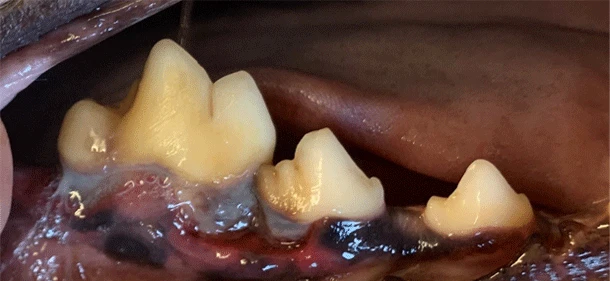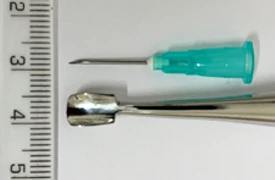Most of the information we need to allow us to decide what we need to do is gathered after we have performed a GA. We can of course do things in stages, the first stage being the dental cleaning/ dental charting/ x-rays and this allows us to cap the costs for this first stage. We can show you the X-rays, take photos and discuss the next part of the plan, the second stage, and give you a new estimate at discharge.
Unfortunately, because gum disease commonly results in bone loss from the tooth socket and gum recession (gum die back), we often find that there is need to extract teeth, often multiple teeth.

If a tooth can’t be saved and it’s causing pain, it needs to be extracted. Sometimes, especially in older pets, we will make tactical decisions to remove teeth that whilst they might be ok a little longer, we really don’t feel that they will, and are not happy to have to put the pet through another procedure. Likewise, if tooth brushing is simply not going to happen (for any of a variety of reasons) or we are dealing with a patient that is super responsive to plaque, we may need to remove affected teeth earlier than we hoped.
If you prefer, and if the vet who performed the dental check-up advised you that they feel that dental surgery may be necessary, we can phone you on the day to discuss the surgery we wish to perform and any attendant costs. If you give us permission and if we can perform all that we need to do, we can get everything done on the same day. Sometimes we run out of time or the anaesthetic has gone on too long, and thus we have to book for another procedure. Whether we plan to get everything done on the same day or to do in stages, we pride ourselves in communicating well with our clients.
Extracting dog and cat teeth is much more technical and time consuming than human teeth. The nearest equivalent in human dentistry would be a wisdom tooth extraction under GA in hospital.
Dog and cat teeth may have up to 3 roots that diverge in different directions meaning that we need to split the tooth with a dentist’s drill and remove them in 3 parts.
Sometimes we need to take out many teeth.
Their roots break very easily compared to our teeth, therefore more time and care are required.
Often times the roots require what we call open extractions, meaning that we need to remove some jaw bone to allow safe access to deeply buried roots or roots that have partly bound themselves to the bone of the socket.
We may need to lift gum flaps to allow us to close the socket over. We try wherever possible to close the extraction site over, for patient comfort and to improve healing. Humans can perform saline mouth rinses after an extraction but we can’t ask our dogs and cats to do this and they don’t know to avoid eating with the areas of the mouth operated on. Closing the gum over the sockets is much preferable to leaving open sockets in most cases.
It can take 45-60 minutes (or longer) just to remove one tooth in some instances.
We usually need to use magnifying, operating glasses called loupes, especially with small dogs and cats, to allow us to see what we need to do. Our instruments’ working tips range in size from 6mm down to the size of a tiny hypodermic needle point.

As mentioned earlier, not only is all this work highly skilled (a lot can go wrong if the surgeon does not work methodically and is not skilled), it can take considerable time. We usually won’t go beyond 4 hours for any one procedure though.